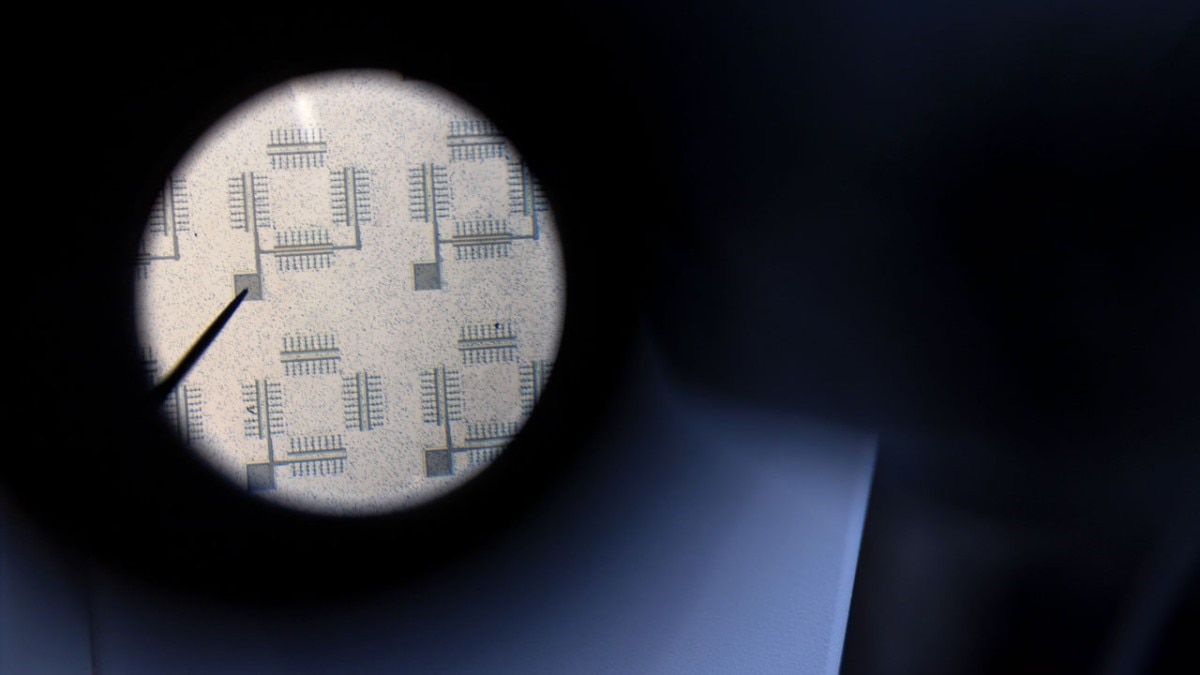
A physical device contains a thousand artificial cilia hairs. Applying a voltage causes them to bend back and forth, which then pumps fluid at tens of microns per second. ( Image Credit: Ryan Young/Cornell University)
Cilia provide many benefits to the human body. For example, it extracts pathogens from the respiratory tract, carries cerebrospinal fluid through the brain’s cavities, and drains mucus from the middle ear into the nasal cavity. Scientists have attempted to understand the working principle behind these tiny hairs by replicating their capabilities. Cornell University researchers developed a tiny artificial cilia chip that controls fluid movement at a microscale level. The team hopes this technology could have portable diagnostic device applications. Plus, this chip has the potential to provide easier, less costly, and more efficient testing for blood samples, cell manipulation, or microfabrication processes. The added benefit is that it would only need smaller sample sizes compared to laboratory testing.
Attempts to create working artificial cilia were achieved via pressure, light, electricity, and magnets. However, it had a problem. The small actuators couldn’t be controlled all at once. So this work builds off an electronically-powered actuator the team previously developed that provided the world’s smallest robot with walking abilities. Similar to those robots’ legs, the cilia consist of a bendable nanometer-thin membrane. , Each cilium measured one-twentieth of a millimeter long and ten nanometers thick and has a titanium layer on one side and a platinum stripe on the other.
Overall, the metallic structure helps provide electrical control over the cilia. Applying a low positive voltage to the cilium produces a chemical reaction. While a droplet of liquid flows, electrified platinum breaks apart the drop’s water molecules. As a result, the oxygen atoms are released, which the platinum’s surface absorbs. Then, the oxygen expands the tape, making it flex. Reversing the voltage releases the platinum’s oxygen, which causes the cilium to revert to its normal shape.
Afterward, the team needed to determine how to design a surface with these cilia. Individually bending and unwinding allows them to move a tiny amount of fluid in any direction. However, moving fluids in a complex pattern required the team to separate the surface into “ciliary units” consisting of a few dozen cilia, making it possible to control each unit one by one.
The team went further and developed a cilia device featuring a CMOS clock circuit, which makes the cilia operate without being hooked up to a computer. This could pave the way toward creating affordable devices for the medical field. This device contains a chip with 18 square units with 8 cilia arrays per unit and 8 cilia per array, totaling approximately a thousand artificial cilia.
“You can imagine in the future, people taking this tiny centimeter-by-centimeter device, putting a drop of blood on it, and conducting all the assays,” Itai Cohen, professor of physics in the College of Arts and. “You wouldn’t have to have a fancy pump, you wouldn’t have to have any equipment, you would just literally put it under sunlight and it would work. It could cost on the order of $1 to $10.”
Have a story tip? Message me at: http://twitter.com/Cabe_Atwell
